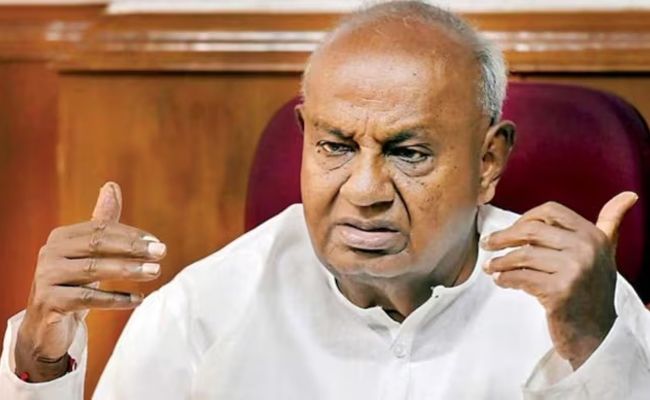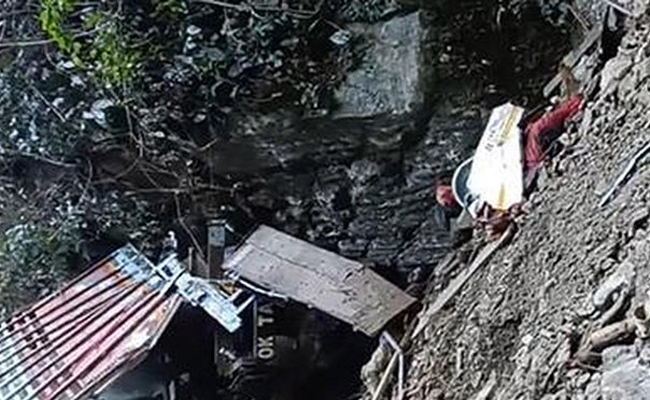Bengaluru: A major data breach has exposed the personal information of more than 2.9 lakh users of the Bangalore Water Supply and Sewerage Board (BWSSB), according to a recent probe conducted by the Bengaluru-based cybersecurity firm CloudSEK.
The breach involved unauthorised access to BWSSB's water connection application portal, exposing sensitive user data including Aadhaar numbers, PAN details, mobile numbers, full addresses, email IDs, and payment records, the probe report revealed, as cited by Deccan Herald on Tuesday.
The compromised database was reportedly listed for sale on BreachForum, an underground data leaks web forum, by a threat actor with the username pirates_gold.
"The initial post by the threat actor specified a payable amount of $500 (approximately Rs 42,616) for access to the compromised BWSSB database. However, upon direct engagement, the actor demonstrated high level of urgency and appeared willing to negotiate significantly lower prices, indicating a potential desperation to sell," CloudSEK noted in its findings, which were shared with both the BWSSB chairman and the Officer on Special Duty to Chief Minister Siddaramaiah.
"The post claimed that the database access would expose records of 2,91,212 users. It was explicitly stated that the compromised data did not include the user's passwords. Additionally, the post featured a few lines of sample data,” said the report, as cited by DH.
The leaked dataset reportedly contained multiple categories of information, including payment data, grievance data, application data, and system logs. The application data alone is said to contain over 2.91 lakh records, featuring full names, complete addresses, contact details, Aadhaar, and PAN numbers—details which could potentially be exploited for identity theft or financial fraud.
Despite the serious nature of the breach, sources in the BWSSB assured that the data was safe. "The entire billing data is stored in the Data Centre maintained by the Karnataka government. The 24x7 monitoring is at a high-security level and a breach of billing data was next to impossible,” DH quoted BWSSB sources as saying.
Meanwhile, BWSSB Chairman Ram Prasath Manohar acknowledged the report and stated that adequate measures would follow, noting that a case would be filed with the cybercrime police. “If a breach has indeed occurred, we will identify the root cause and involve technical experts to bolster our data security systems,” DH quoted Manohar as saying.
As part of its findings, CloudSEK recommended immediate corrective measures, including conducting a comprehensive security audit, revoking any exposed or potentially compromised credentials, and removing public access to administrative interfaces to prevent future breaches.
Let the Truth be known. If you read VB and like VB, please be a VB Supporter and Help us deliver the Truth to one and all.
New Delhi (PTI): India has proposed a preferential trade agreement (PTA) with Mexico to help domestic exporters deal with the steep tariffs announced by the South American country, a top government official said on Monday.
Mexico has decided to impose steep import tariffs - ranging from about 5 per cent to as high as 50 per cent on a wide range of goods (about 1,463 tariff lines) from countries that do not have free trade agreements with Mexico, including India, China, South Korea, Thailand and Indonesia.
Commerce Secretary Rajesh Agrawal said that India has engaged with the country on the issue.
"Technical level talks are on...The only fast way forward is to try to get a preferential trade agreement (PTA) because an FTA (free trade agreement) will take a lot of time. So we are trying to see what can be a good way forward," he told reporters here.
While in an FTA two trading partners either significantly reduce or eliminate import duties on maximum number of goods traded between them, in a PTA, duties are cut or removed on a limited number of products.
Trading partners of Mexico cannot file a compliant against the decision on imposing high tariffs as they are WTO (World Trade Organisation) compatible.
The duties are within their bound rates, he said, adding that their primary target was not India.
"We have proposed a PTA because its a WTO-compatible way forward... we can do a PTA and try to get concessions that are required for Indian supply chains and similarly offer them concessions where they have export interests in India," Agrawal said.
ALSO READ: Mexico's Congress approves higher tariffs on goods from India, China and non-FTA nations
Citing support for local production and correction of trade imbalances, Mexico has approved an increase in MFN (most favoured nation) import tariffs (5-50 per cent) with effect from January 1, 2026 on 1,455 tariff lines (or product categories) within the WTO framework, targeting non-FTA partners.
Preliminary estimates suggest that this affects India's around USD 2 billion exports to Mexico particularly -- automobile, two-wheelers, auto parts, textiles, iron and steel, plastics, leather and footwear.
The measure is also aimed at curbing Chinese imports.
India-Mexico merchandise trade totalled USD 8.74 billion in 2024, with exports USD 5.73 billion, imports USD 3.01 billion, and a trade surplus of USD 2.72 billion.
The government has been continuously and comprehensively assessing Mexico's tariff revisions since the issue emerged, engaging stakeholders, safeguarding the interests of Indian exporters, and pursuing constructive dialogue to ensure a stable trade environment benefiting businesses and consumers in both countries.
ALSO READ: Search operation ends in Anjaw truck accident, 20 bodies recovered
Federation of Indian Export Organisations (FIEO) Director General Ajay Sahai has said that Mexico's decision is a matter of concern, particularly for sectors like automobiles and auto components, machinery, electrical and electronics, organic chemicals, pharmaceuticals, textiles, and plastics.
"Such steep duties will erode our competitiveness and risk, disrupting supply chains that have taken years to develop," Sahai said, adding that this development also underlines the little urgency for India and Mexico to fast-track a comprehensive trade agreement.
Domestic auto component manufacturers will face enhanced cost pressures with Mexico hiking duties on Indian imports, according to industry body ACMA.





